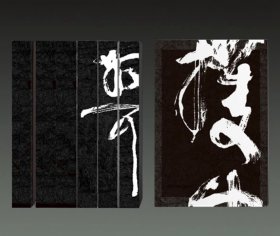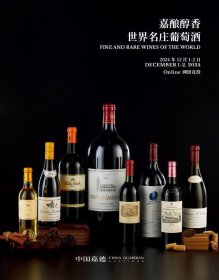
中华艺术宫---典藏名家精品系列:关良
¥ 260 九五品
仅1件
北京朝阳
认证卖家担保交易快速发货售后保障
作者上海美术馆
出版社上海人民美术出版社
出版时间2012
版次1
印刷时间2012
印次1
装帧平装
开本16开
纸张铜版纸
上书时间2018-03-26
- 最新上架
商品详情
- 品相描述:九五品
- 商品描述
-
总序
2012年10月1日,在原世博会中国馆基础上改建而成的中华艺术宫向社会开放,16万平米的建筑面积,6万4千平米的展示空间,开馆系列展览总计1500余件近现当代艺术作品的精彩展陈,昭示着东海之滨、黄浦江畔的亚洲中心城市上海一座崭新的重量级艺术殿堂的诞生。
中华艺术宫以立足上海、携手全国、面向世界为基本建设原则,以收藏保管、学术研究、陈列展示、普及教育和对外交流等为基本职能, 体现中国气派和国际视野。中国近现代美术肇始于上海,中国当代美术在上海最先萌发。中华艺术宫将以上海国有艺术单位的收藏为基础,常年陈列反映中国近现代美术起源与发展脉络的艺术珍品,并携手全国美术界,收藏和展示代表中国艺术创作最高水平的艺术作品,联络世界著名艺术博物馆,合作展示各国近现代艺术珍品,力争打造成为中国近现代经典艺术传播、东西方文化交流展示的中心,广大人民群众享受经典艺术、享有公共文化服务的高雅殿堂。
为配合中华艺术宫开馆以及推出的系列国内外精彩展览,此次特别策划、出版了相应的学术性系列画册,以图文并茂的形式,寓研究和普及于一体,生动地展现上海、中国乃至世界艺术的珍藏和学术研究的成果,以飨众多的艺术爱好者和美术专业人士。
中华艺术宫
2012年10月1日
General Preface
China Art Museum, Shanghai, rebuilt upon the China Pavilion of Shanghai World Expo., will open on October 1st, 2012 to the public. It covers a building area of 160,000 m2 and an exhibition space of 64,000 m2; over 1500 classical modern artworks in total will be displayed in a splendid way on the opening series exhibitions of China Art Museum, Shanghai, indicating the birth of a brand-new heavy-weight art palace in Shanghai, the central city of Asia beside the East China Sea and by the Huangpu River.
Following the basic construction principals of "standing in Shanghai, cooperating nationwide and facing the world", the China Art Museum, Shanghai will represent the Chinese manner and international horizon. Its basic functions are collection and preservation, academic research, exhibition, education promotion and external exchange. Chinese modern art originated in Shanghai, and so did the Chinese contemporary art. Based on the collections of state-owned art institutions, the art treasures which reflect origin and development context of Chinese modern arts will be displayed in China Art Museum, Shanghai throughout the year. China Art Museum, Shanghai will cooperate with the nationwide art circles to collect and display the works representing the top level of China's art creation; furthermore, it will reveal the precious modern artworks all over the world by uniting with the world famous art museums, thus to build a center for the dissemination of China modern classical art and the display and communication of culture between the east and west, meanwhile, to make it an elegant palace for the majority to enjoy classic art and public cultural service.
In order to match up with the opening of China Art Museum, Shanghai and the serial exhibitions abroad and domestic, we have specially planned and published relevant academic catalogues, to vividly show the valuable art collections and academic research achievements throughout Shanghai, China and even the whole world by means of integrating pictures and essays, research and popularization together, thus satisfying the numerous art lovers and artists.
by China Art Museum, Shanghai
October 1st, 2012
序言
若论20世纪中国人物画,关良应该摆在前列位置。他以画戏享誉20世纪中国画坛,是中国近现代画坛上一位不可或缺的大师,也是最早将西方绘画艺术介绍到我国的先行者之一。关良早年赴日本学习西洋画,其时正是西方现代派在日本盛行之际,他幸运地观摩了许多印象派大师的作品并深受影响。从他留下的数以千计的国画和几十幅油画作品看,他不仅将西方现代派的绘画理念引入中国传统的水墨画之中,也在油画中体现了许多传统中国画的元素。他以东西方绘画技巧为手段,以戏剧为内容,进行了六十多年的艺术探索和创造。
关良爱戏,他与戏曲的缘分可以追溯到童年时期。那时候父亲偶得的几张“洋片”和十余岁时两广会馆的听戏生涯,引领年少的关良走进一个集社会、历史、文化于一体的朦胧世界。“武松打虎”、“豹子头林冲”、“铁拐李”、“红孩儿”……生动的故事、有趣的造型、多姿的色彩、简易的线条使他开始模仿涂鸦。他从声情并茂的戏剧里读懂了中国社会的漫长历史,树立起是非善恶的人生观,滋长了对英雄的崇拜之情。戏剧对他不仅仅是戏剧,更是历史、文化、艺术、民俗和道德观念的浓缩,是他取之不尽、用之不竭的灵感源泉。
关良画戏,是自己进入角色的。他是一个超级戏迷,能拉会唱,曾专门到科班出身的行家处学戏,买了髯口、马鞭、靴子,熟悉了唱、念、做、打的每招每式,这种亲历亲为的艺术体验,使他具备了呼之即出的生活基础,为其戏曲人物画的创作奠定了生活与情感上的准备。
关良的水墨戏剧人物画多以减笔入画,以线勾形,背景大量留白,不拘泥所绘对象的透视和比例,而以夸张、变形的手法传神写照,率真稚拙、纯朴自然。他刻苦经营以少胜多的“简”的传神艺术语言,在“形与意”的塑造中架起了一座桥梁。
今天再度品味关良佳作,不难感知其匠心独运、巧拙相生的大家风范。正如刘海粟曾评价关良“戏剧人物画,抒情写意,发掘民族艺术精魂,格局博大,动静相生,令人百看不厌,久而弥新”。
Foreword
Guan Liang should rank as one of the leading characters,as regards Chinese figure painting in the 20th century. Highly acclaimed in the art world of China during the last century,he was a significant master in modern Chinese painting,as well as a pioneer in the introduction of western-style painting. He went to Japan to study western painting in his early days,where western Modernist painting dominated then. And he got access to a lot of original Impressionist works,which greatly inspired him. Hundreds of Chinese paintings and dozens of oil paintings made by him demonstrates that he had not only introduced western modern ideas of painting into traditional Chinese ink and wash art,but also absorbed elements of traditional Chinese painting into his oil painting practice. During his career for more than sixty years,he had employed the techniques of Chinese and western painting in his depiction of traditional opera.
Guan Liang loved drama,and his first contact with opera dated back to his childhood. The opera cards which occasionally came to the hands of his father and the performances in Liangguang Clan Association he watched around ten,led him into a world full of social,historical and cultural appeals. “Wu Song Fighting Tiger”,“'Leopard's Head' Lin Chong”,“Iron Crutch Li”,“Red Boy”…Intriguing stories,attractive characters,rich colors,and clean lines inspired him to paint. The traditional dramas gave him the understanding of the long history of China,the judgment of right and wrong,and admiration of heroes. Drama became the container of historical,cultural,artistic,moral ideas and folklore for him,an infinite source of inspiration.
In his depiction of opera scenes,the painter got deeply involved. As a super fan,he was capable of playing instruments and singing. Taught by real professionals,he got adept at the singing,dialogue,acting and acrobatic combat routines of opera. Such first-hand experiences prepared him well for his art practice in terms of emotions and sensitivities.
His ink paintings of theatre characters are characteristic of minimalist delineation by lines,empty background,exaggeration and distortion which pursues lifelikeness,not restrained by perspective and proportion. The innocent and natural simplicity secured by his minimalist vocabulary bridges the gap between form and lifelikeness.
The originality and the expressive simplicity of a master hand still hold great appeal to us. It is proper to quote Liu Haisu in his evaluation of Guan Liang,“his theatre character painting,drawing from traditional art,are very expressive and grand. The tension between stillness and momentum possesses everlasting originality and charm.”
目录
戏剧人物(之六)1
武剧图(之五)2
林冲夜奔3
戏剧人物(之七)4
武松打虎5
李逵三打祝家庄6
钟馗捉鬼图7
孙悟空大闹天宫图8
霸王别姬10
武松打虎(之一)11
武松打店12
伏虎罗汉13
武剧图14
苏三起解15
武剧图(之一)16
贵妃醉酒 17
钟馗嫁妹图(之三)18
大闹天宫20
鸿鸾禧一段22
拾玉镯23
西游记(之五)24
捉放曹25
钟馗26
武剧图(之二)27
白蛇传28
春香闹学29
钟馗嫁妹(之一)30
晴雯补裘32
东郭先生受教图33
太白醉写蛮书34
李慧娘35
十五贯36
鸳鸯楼37
武松醉打蒋门神38
武松打虎(之二)39
鲁智深大闹野猪林40
鲁智深醉打山门42
鲁智深倒拔杨柳43
石秀智杀裴如海(之二)44
三岔口45
豹子头林冲46
乌龙院47
通天犀48
偷桃49
孙悟空三打白骨精50
悟空斗杨戬51
孙悟空大闹火焰山52
十八罗汉斗悟空54
西游记(之三)55
西游记(之一)56
西游记(之二)57
西游记(之四)58
三国人物(之一)59
三国人物(之二)60
空城计61
戏剧人物62
武打人物图63
水墨人物图64
武打图66
武剧图(之三)68
武剧图(之四)70
钟馗嫁妹图(之二)71
戏剧人物72
戏剧人物(之一)73
戏剧人物(之二)74
戏剧人物(之三)75
戏剧人物(之四)76
戏剧人物(之五)77
戏剧人物(之八)78
戏剧人物(之九)80
戏剧人物(之十)81
戏剧人物(之十一)82
戏剧人物(之十二)83
戏剧人物(之十三)84
戏剧人物(之十四)85
戏剧人物(之十五)86
戏剧人物(之十六)87
戏剧人物(之十七)88
戏剧人物(之十八)89
戏剧人物(之十九)90
戏剧人物(之二十)91
册页92
人物册页93
人物册页—鸿鸾禧94
人物册页—武剧人物95
人物册页96
人物册页97
人物册页98
人物册页—武松大闹狮子楼99
人物册页100
人物册页101
人物册页—钟馗出巡102
人物册页—铁弓缘一段103
人物册页—黛玉葬花104
Theatre Characters no.61
Martial Opera no.52
Lin Chong Fleeing At Night3
Theatre Characters no.74
Wu Song Fighting Tiger5
Li Kui Attacking Zhujia Zhuang6
Zhong Kui Catching Ghost7
Monkey King's Havoc in Heaven8
Farewell to My Beloved Lady10
Wu Song Fighting Tiger no.111
Wu Song Entering the Restaurant12
Arhat Tiger13
Martial Opera14
Su San Consigned as a Culprit15
Martial Opera no.116
Imperial Concubine Getting Tipsy17
Zhong Kui Marrying Off His Younger Sister no.318
Havoc in Heaven20
Marriage Approaching22
Picking up Jade Bracelet23
Journey to the West no.524
Kill or Not Kill25
Zhong Kui26
Martial Opera no.227
Romance of White Snake28
Chun Xiang's Havoc in Private School29
Zhong Kui Marrying Off His Younger Sister no.130
Qingwen Mending Fur Robe32
Dong Guo Learning a Lesson33
Li Bai Composing Imperial Letter Intoxicated34
Li Huiniang35
Fifteen Strings of Copper Coins36
Duck Couple Pavilion37
Wu Song Beating Jiang Menshen While Tipsy38
Wu Song Fighting Tiger no.239
Lu Zhishen's Havoc in Boar Wood40
Lu Zhishen Beating Liquor Monger on a Drunk42
Lu Zhishen Plucking Willow Tree43
Shi Xiu Taking Pei Ruhai's Life no.244
Crossroads45
Leopard's Head Lin Chong46
Wulong Villa47
Rhinoceros Horn48
Stealing Peaches49
Monkey King Beating Skeleton Demon50
Monkey King Fighting Yang Jian51
Monkey King's Havoc in Fire Mountain52
Arhats Fighting Monkey King54
Journey to the West no.355
Journey to the West no.156
Journey to the West no.257
Journey to the West no.458
Characters from Three Kingdoms no.159
Characters from Three Kingdoms no.260
Empty Fort Strategy61
Theatre Character62
Martial Character63
Characters64
Fight66
Martial Opera no.368
Martial Opera no.470
Zhong Kui Marrying Off His Younger Sister no.271
Theatre Characters72
Theatre Characters no.173
Theatre Characters no.274
Theatre Characters no.375
Theatre Characters no.476
Theatre Characters no.577
Theatre Characters no.878
Theatre Characters no.980
Theatre Characters no.1081
Theatre Characters no.1182
Theatre Characters no.1283
Theatre Characters no.1384
Theatre Characters no.1485
Theatre Characters no.1586
Theatre Characters no.1687
Theatre Characters no.1788
Theatre Characters no.1889
Theatre Characters no.1990
Theatre Characters no.2091
from Album92
from Portraits Album93
Marriage Approaching, from Portraits Album94
Martial Characters, from Portraits Album95
from Portraits Album96
from Portraits Album97
from Portraits Album98
Lion Wood, from Portraits Album99
from Portraits Album100
from Portraits Album101
Zhong Kui Travelling, from Portraits Album102
Iron Bow, from Portraits Album103
Daiyu Burying Fallen Flowers, from Portraits Album104
— 没有更多了 —












以下为对购买帮助不大的评价